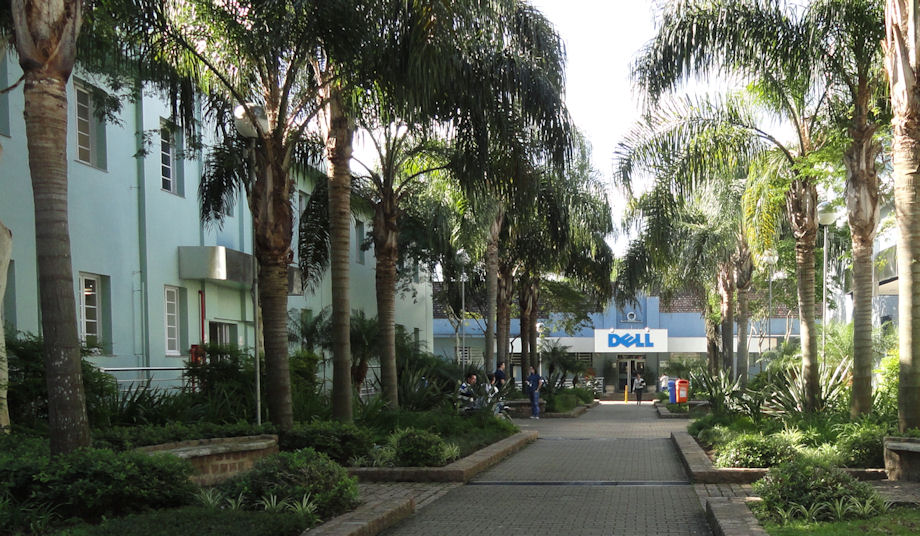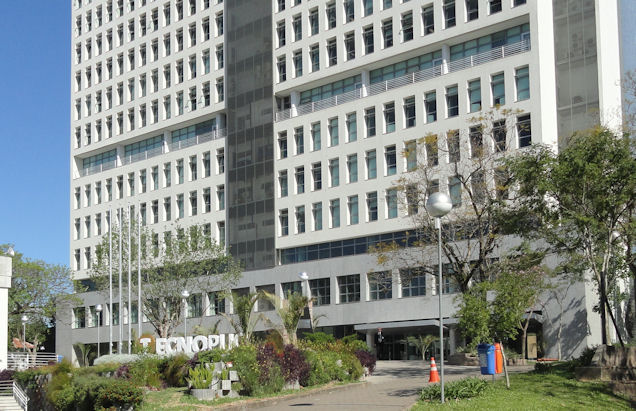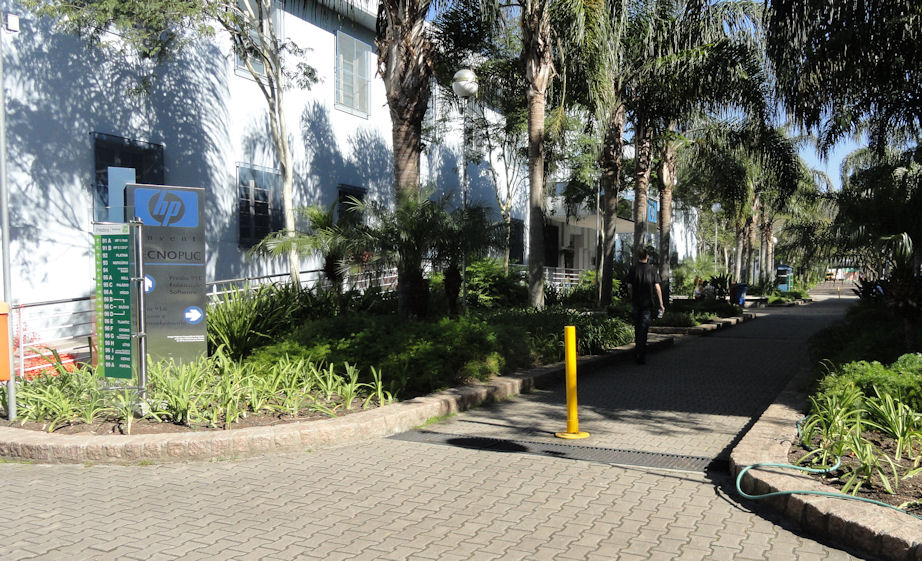
I have visited technology parks north and south of Brazil. There is a difference that I would liken to newly transplanted trees and ones that have been growing in the same place for a long time. I was very impressed with what I saw in Recife & Salvador. They are developing.

What I saw in Porto Alegre at is TecnoPuc like a developed mature and productive forest with all the complex interrelationship that implies. TecnoPuc is (PUC – Rio Grande do Sul in Porto Alegre’s Science and Technology Park, with 5.4 hectares area located on PUCRS’ main campus in Porto Alegre, an area of more than 70 ha, 30,000 students, 1,600 faculty and 4,800 staff. You can read the details at the link.
TecnoPuc is housed on the grounds of what used to be a military base. This turns out to have lots of the things you need for a technology park, since the buildings are set up to allow both concentration and dispersal. The tall building on the side is rental and incubation space for smaller and start-up firms. More established ones rent whole floors or buildings.

Students & professors from PUC in Rio Grande do Sul play an active role with the firms at TecnoPuc, providing the essential cross fertilization we find in successful technology areas such as Silicon Valley, Massachusetts Route 128 or the Research Triangle in North Carolina. Lots of people have studied the innovation hotbed idea and the exact ingredients are unknown, but they always include a strong university and a concentration of talent. The Internet has not yet substituted for the magic of geographical proximity. There is something about just being close to other innovators that makes the whole greater than the sum of its parts.
I think this interactive ingredient is the hardest to duplicate in a new area. Authorities try to implant such innovation centers in poor areas; most fail because they don’t attract enough of the right people and ideas, despite wonderful buildings and various tax breaks and incentives. Sometimes they succeed in attracting the big names of the past decade rather than developing the talent of the next.

I return to my forestry metaphor I started with. (I know that I go back to the ecology analogies very often, but those are the ones I understand best and I think they apply best.) I can try to plant the best trees, but there are all sorts of other things at work that I don’t control or even understand. A forest can fail for reasons I just don’t know exist, or they can succeed also for reasons I don’t understand. Nevertheless, people will take credit and or try to learn and copy.
Of course, there is the element of leadership. This is often obscured in the case of innovation areas, where we often tend to think success just happens “spontaneously.” There is often someone with vision present at the creation, usually a group of them making good and forward looking decision. Let me take my forestry example again. Initial decisions create problems or benefits for dozens or even hundreds of years long after the decision and decision makers are forgotten.
Every successful innovation center I have ever seen is in pleasant natural surroundings. Who can say if this is the cause or effect or an interaction of both. Successful firms can afford to create nice surroundings, which attracts good people and maybe makes them more productive. But it is the success that is the most important in creating more success, not the surrounding. Otherwise the prettiest places would also be the most productive and they are not.
We are taken in by a form of “survivor bias”. We find the successful places and then project backwards to the reasons, ignoring those with similar characteristics that did not succeed, often not even knowing of their existence.
The TecnoPuc success provides a good example. When we look back, we can see all the reasons why success was inevitable. But if you were looking forward from a quarter century ago, it would not look so certain.
The people I met at TecnoPuc talked about visiting similar innovation centers in the U.S. as a voluntary visitor group. IMO, this would help both them and those they visited in the U.S. I encouraged them to be in touch with their Brazilian colleagues at places like CETENE & CESAR, among others. We would have a much easier time organizing a great program for a more diverse group. They already know each other and I hope we can broker a good connection between my new Brazilian friends and my fellow innovative Americans. In my small part in my forestry metaphor maybe I am the squirrel who carries an acorn.
The pictures show some of the firms at TecnoPuc. You can see HP and Dell. The other picture shows a place where they are studying cures from Tuberculosis that require fewer doses and less time. One of the biggest challenges in public health related to TB is that the course of medicine must be followed to the end. But people feel better after half the course and they sometimes wander off. This not only makes the person sick again, but helps develop “super bugs”, strains of TB that can resist the medicines used against them. This is a nightmare scenario. The medicines have to get all the germs, so that some cannot escape and adapt. A shorter series would make this more achievable for more people.
